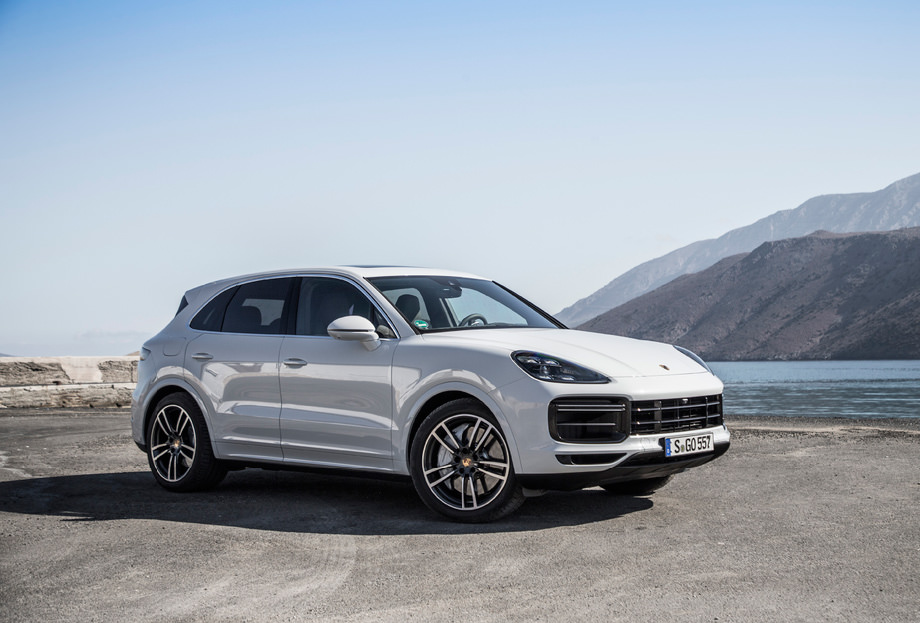The art behind a Porsche redesign is rarely visual.
That’s not to say that Porsche design isn’t art. In the eyes of some beholders, the brand makes the most beautiful cars on the planet.
But the German brand’s designers, for the most part, have that timeless appearance nearly perfected. When moving from one generation of model to the next, few things change because there is rarely need or call for it. A Porsche looks the way it looks, to the delight of the company’s devotees.
To understand what makes an updated Porsche stand out, it’s therefore often necessary to look well beneath the surface.
Take the new Cayenne. Every exterior panel has been revised as it moves from its second to third generation, yet the only evident change is an updated tailgate with the same full-width light bar, as well as new badging treatment that is being standardized across the Porsche lineup. Observing subtler changes, such as refurbished front air vents and a slightly lifted side panel accent line, takes a keener eye. Peel away the sheet metal, though, and find that the engineering paints a very new picture.
It starts with revised powertrains. The entry model goes from a 3.6-litre V6 engine to a 3.0-litre turbo V6 with 335 horsepower, up by 35. And its torque output improves from 295 to 332 pound-feet, which is available at lower revolutions and for a broader power band of 1,340 to 5,300 revolutions per minute.
In the Cayenne S, a 3.6-litre twin-turbo V6 is traded in for a 2.9-litre six-cylinder hot-V engine, which means that the two turbochargers are positioned between the cylinders for better efficiency and performance. It also delivers a 14-horsepower increase to a total of 434 to go with the same 406 pound-feet of torque. The Cayenne Turbo houses a hot-V as well, trading its 4.8-litre twin-turbo V8 for a 4.0-litre, while horsepower goes up to 541 from 520, and torque increases from 553 to 568 pound-feet.
And then there’s the suspension. The front axle’s track on all models has widened by 44 millimetres for improved handling, while the previous generation’s double wishbone setup has been switched for a multilink: a system that strikes a better balance between the high-speed and off-road performance that a Cayenne owner demands.
Carbon-ceramic brakes are still available, but a new decelerating system (optional on the Cayenne and Cayenne S, standard on the Turbo) has enormous 415-millimetre front and 365-millimetre rear discs coated with tungsten carbide. This treatment improves braking response and produces less dust than cast-iron versions, so the 10-piston front calipers and 4-piston rears that go with them are painted white: a colour that is traditionally avoided because most brakes would blacken them so quickly. Over time, the discs wear down to a unique mirrored finish.
Rear-axle steering is an option for the first time, which turns the back wheels up to three degrees in opposition to the fronts until speeds reach 80 kilometres per hour, and in the same direction above that mark. The difference this makes in real-world driving dynamics is especially noteworthy.
The world’s first adaptive roof spoiler, available on the Turbo model, adds six degrees of angle at speeds above 160 kilometres per hour; 12.6 degrees when the optional Sport Chrono package’s sport-plus mode is enabled; 19.9 degrees when the sunroof is open at more than 160 kilometres per hour, to reduce wind buffeting; and 28.2 degrees when the vehicle is under braking from speeds between 170 and 270 kilometres per hour.
This is perhaps more technical than some might care to be when shopping for a premium SUV that will most often shuttle around a family of four. But the true appeal of the new Cayenne, which could very well end up on more Canadian driveways than any other vehicle in the Porsche lineup, is its remarkable diversity. It transitions from smooth on-road manners to off-road competence and yes, even to outright performance that genuinely fits in on a racetrack.
It’s unquestionably the most all-around capable vehicle that Porsche has ever produced. Indeed, beauty can run far deeper than skin.
Keep driving through our Transportation section.










